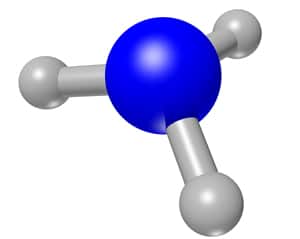How It’s Used
Ammonia is a clear colorless gas with a strong odor. This compound can be found throughout the environment in the air, soil, and water, and in plants and animals, including humans; indeed, it is part of the nitrogen cycle. Ammonia is essential for many biological processes and serves as a precursor for amino acid and nucleotide synthesis.
About 80% of the ammonia produced by industry is used in agriculture as fertilizer. The compound is also used as a refrigerant gas, for purification of water supplies, and in the manufacture of plastics, explosives, textiles, pesticides, dyes and other chemicals. This chemical is found in many household and industrial-strength cleaning solutions. Household ammonia cleaning solutions are manufactured by adding ammonia gas to water and can be between 5 and 10% ammonia. Ammonia solutions for industrial use may be concentrations of 25% or higher and are corrosive.
Occupational Health/Toxicology
Most people are exposed to ammonia from inhalation of the gas or vapors. Such exposure causes immediate burning of the nose, throat and respiratory tract. This can cause bronchiolar and alveolar edema, and airway destruction resulting in respiratory distress or failure. Inhalation of lower concentrations can cause coughing, and nose and throat irritation. While ammonia’s odor provides adequate early warning of its presence, it ia also causes olfactory fatigue or adaptation, reducing awareness of one’s prolonged exposure at low concentrations.
Ammonia interacts immediately upon contact with available moisture in the skin, eyes, oral cavity, respiratory tract, and particularly mucous surfaces to form the very caustic ammonium hydroxide. Ammonium hydroxide causes the necrosis of tissues through disruption of cell membrane lipids (saponification) leading to cellular destruction. As cell proteins break down, water is extracted, resulting in an inflammatory response that causes further damage.
Anhydrous ammonia gas is lighter than air (molecular weight = 17.031) and will rise, so that generally it dissipates and does not settle in low-lying areas. However, in the presence of moisture, the liquefied anhydrous ammonia gas forms vapors that are heavier than air. These vapors may spread along the ground or into low-lying areas with poor airflow where people may become exposed.
Skin or eye contact: Exposure to low concentrations of ammonia in air or solution may produce rapid skin or eye irritation. Higher concentrations of ammonia may cause severe injury and burns. Contact with concentrated ammonia solutions such as industrial cleaners may cause corrosive injury including skin burns, permanent eye damage or blindness. The full extent of eye injury may not be apparent for up to a week after the exposure. Contact with liquefied ammonia can also cause frostbite injury.
Ingestion: Exposure to high concentrations of ammonia from swallowing ammonia solution results in corrosive damage to the mouth, throat and stomach. Ingestion of ammonia does not normally result in systemic poisoning.
Full record on ammonia from Hazardous Substances Data Bank (HSDB), a database provided by the US National Library of Medicine.
The ammonia entry from NIOSH’s Pocket Guide to Chemical Hazards.
Monitoring Instrumentation
Check out Interscan’s full line of ammonia gas detection/gas monitoring instrumentation.

